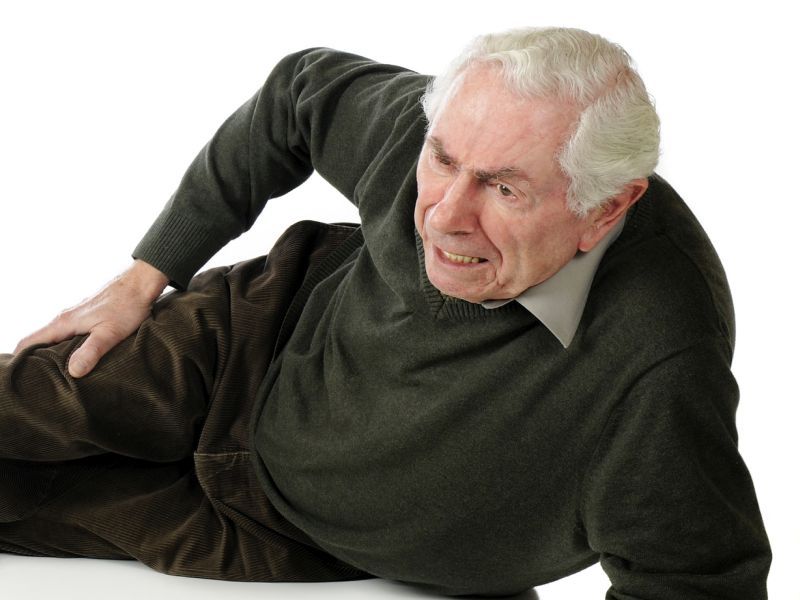TUESDAY, March 23, 2021 (HealthDay News) — Among older Americans, deaths from falls are up sharply, dovetailing with a surge in use of medications that increase the risk of falling, researchers say.
Two decades ago, about 57% of U.S. seniors took medications that increased their risk of falls. By 2017, that number had risen to 94%, and deaths caused by falls had more than doubled, a new study found.
The medications are meant to limit harm from serious conditions ranging from high blood pressure to depression. So, how can patients and their doctors find the right balance?
“What we’re trying to stress is that it’s not that any one of these drugs is necessarily ‘a bad drug,'” said lead author Amy Shaver. She is a postdoctoral research fellow at the University at Buffalo School of Public Health and Health Professions, in New York. “These drugs are all necessary medications, but there needs to be a conversation about risks and advantages, that pro-con conversation about: For this particular patient at this particular point in time, what can we do?”
Shaver was inspired to investigate the link between falls and medications by a 2019 editorial in a medical journal that noted an increase in deaths due to falls among older Americans without offering a cause. A pharmacist, Shaver wondered if prescription drugs might be the culprit.
It’s a significant concern: Medical costs related to fall injuries in older Americans are close to $50 billion a year, according to the U.S. Centers for Disease Control and Prevention. And even minor falls can endanger older adults and leave damage that lowers their quality of life.
Drugs that can increase the risk of falls include antidepressants, some high blood pressure and antiseizure medicines, antipsychotics, opioids, sedative hypnotics and tranquilizers.
For the study, Shaver’s team compared death data from 1999 to 2017 for Americans aged 65 and older, to information on medical spending to determine whether medications and falls had increased.
Over the study period, older adults filled more than 7.8 billion prescriptions for drugs that can increase the risk of falls, the findings showed. Most were high blood pressure medicines. Prescriptions for antidepressants also rose sharply, from 12 million in 1999 to more than 52 million in 2017.
Over the period, falls more than doubled from 29.4 per 100,000 to 63.3 per 100,000, the investigators found.
Women, especially Black women, were more likely to be prescribed these drugs, the study authors said. And white women aged 85 and older had the highest increase in fall deaths — up more than 160% between 1999 and 2017.
While the study doesn’t prove that medications caused the fatal falls, it points to the need to dig deeper, Shaver said.
“What we need to do now is say on an individual level … is this person who happened to have died from a fall, were they individually receiving a fall risk-increasing drug? Did they get a prescription for a drug in the reasonable amount of time prior to their death?” she said. “So that we can say that there’s potentially a causal link. That’s what we don’t have right now, but we do have two really strong trends saying that there’s something here that we need to look at.”
Shaver noted that some of the medications may make a person feel a little unsteady. This could be even worse if you’re already unstable because of other health conditions.
The findings were recently published in the journal Pharmocoepidemiology and Drug Safety.
Joshua Niznik is an assistant professor in the division of geriatric medicine at the University of North Carolina (UNC) School of Medicine in Chapel Hill.
He reviewed the study findings and noted that every person has a different susceptibility to various drugs. The doses can also make a difference, he said.
“We’re starting to understand now that the dose of the medication that someone is on is really what we should be looking at probably with the greatest level of scrutiny, and that really has a strong correlation with falls,” Niznik said.
That’s important, he said, because there aren’t a lot of different drug alternatives for some of these conditions.
“We objectively say, ‘Oh, that’s inappropriate,’ but subjectively when looking at each individual patient, it may be that despite the risk, the patient or the physician is willing to take that risk because the benefits of being on the drug outweigh the potential harms,” he said.
Niznik, who is also an assistant professor in the division of pharmaceutical outcomes and policy at UNC’s Eshelman School of Pharmacy, added that factors other than medications could be contributing to seniors’ falls, including frailty, balance and other health conditions.
Niznik said it’s becoming more standard in practice for doctors to talk with their patients about goals of care and for decision-making to be shared.
As a safeguard, patients can have their homes assessed for risk of falls and their medication lists reviewed by their pharmacists.
Shaver said she hopes the findings will increase conversations among health care teams about the pros and cons of prescribing these medications.
Simultaneous use of multiple drugs is a huge problem in an older population where medications could potentially be reduced and alternatives sought, Shaver said.
“A big part of it is asking,” she added. “A patient needs to realize that they are the integral member of the health care team and advocate for themselves.”
More information
The U.S. National Institute on Aging offers tips for avoiding falls and fractures.
SOURCES: Amy Shaver, PharmD, MPH, postdoctoral research fellow, University at Buffalo School of Public Health and Health Professions, Buffalo, N.Y.; Joshua Niznik, PharmD, PhD, assistant professor, medicine, Eshelman School of Pharmacy and division of geriatric medicine, University of North Carolina School of Medicine, Chapel Hill, N.C.; Pharmocoepidemiology and Drug Safety, Feb. 3, 2021
Copyright © 2025 HealthDay. All rights reserved.

